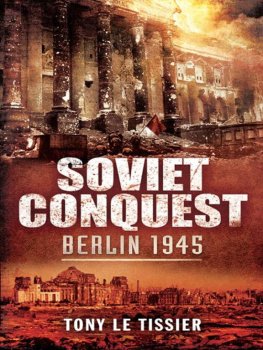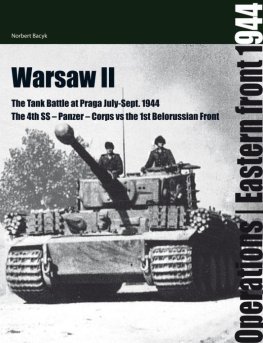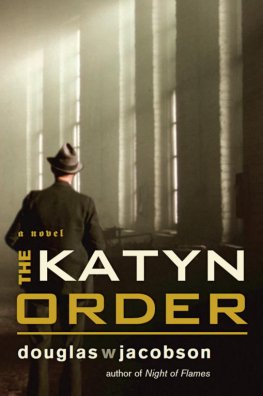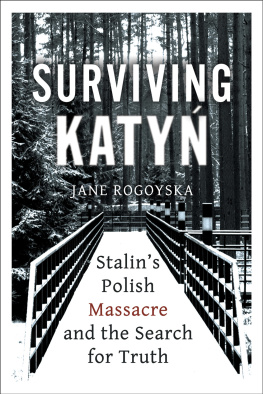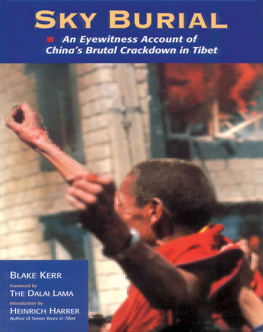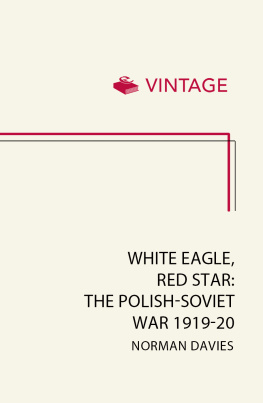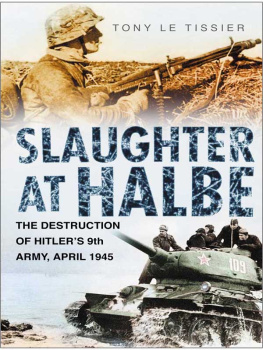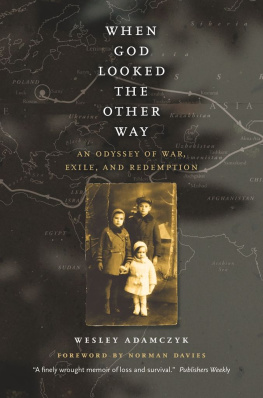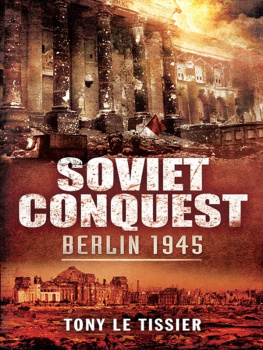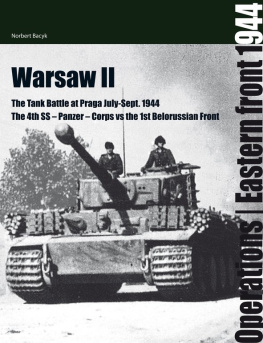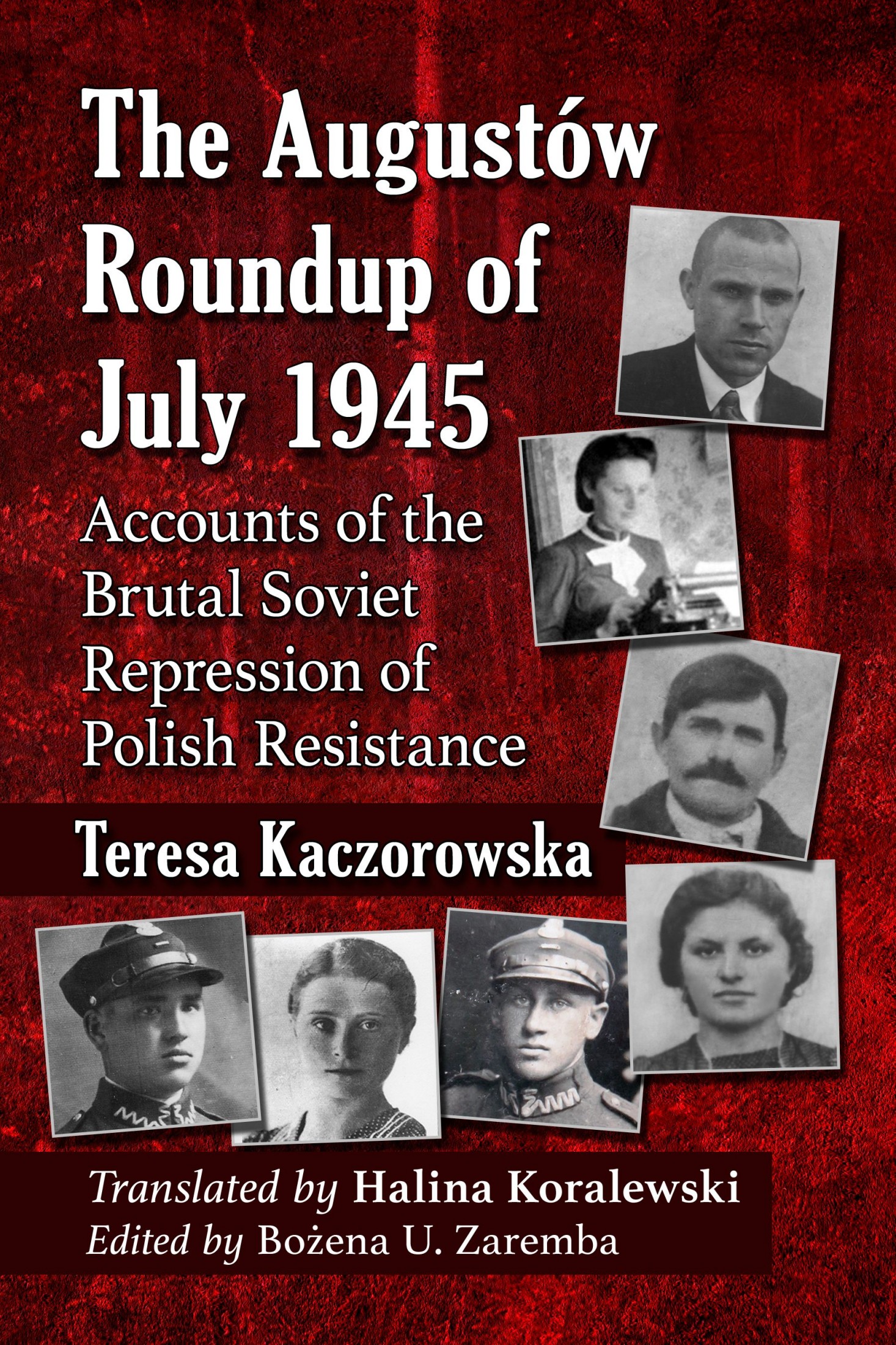The Augustw Roundup of July 1945
Also by Teresa Kaczorowska and from McFarland
Children of the Katyn Massacre: Accounts of Life After the 1940 Soviet Murder of Polish POWs (2006)
The Augustw Roundup of July 1945
Accounts of the Brutal Soviet Repression of Polish Resistance
Teresa Kaczorowska
Translated by Halina Koralewski
Edited by Boena U. Zaremba
Afterwords by Danuta Kaszlej, Zbigniew Kaszlej and Nikita Pietrov

McFarland & Company, Inc., Publishers
Jefferson, North Carolina
Published by special arrangement with Bellona Publishing House.
All photographs are from the authors collection.
Library of Congress Cataloguing-in-Publication Data
Names: Kaczorowska, Teresa, author. | Koralewski, Halina, 1946 translator. | Zaremba, Bozena U., 1960 editor.
Title: The Augustow roundup of July 1945 : accounts of the brutal Soviet repression of Polish resistance / Teresa Kaczorowska ; translated by Halina Koralewski ; edited by Bozena U. Zaremba.
Other titles: Obawa Augustowska. English | Accounts of the brutal Soviet repression of Polish resistance
Description: Jefferson, North Carolina : McFarland & Company, Inc., Publishers, 2023 | Includes bibliographical references and index.
Identifiers: LCCN 2022023290 | ISBN 9781476689043 (paperback : acid free paper)
ISBN 9781476646848 (ebook)
Subjects: LCSH: Augustow Roundup, 1945Personal narratives. | Anti-communist movementsPolandAugustow (Wojewodztwo Podlaskie)History. | CounterinsurgencyPolandHistory20th century. | Augustow Forest RegionHistory, Military20th century. | Political persecutionAugustow Forest RegionHistory20th century. | AtrocitiesAugustow Forest Region. | PolandHistoryOccupation, 19391945. | BISAC: HISTORY / Wars & Conflicts / World War II / General | HISTORY / Europe / Poland
Classification: LCC DK4600.A9 K3313 2022 | DDC 943.8/32dc23/eng/20220517
LC record available at https://lccn.loc.gov/2022023290
British Library cataloguing data are available
ISBN (print) 978-1-4766-8904-3
ISBN (ebook) 978-1-4766-4684-8
2023 Teresa Kaczorowska. All rights reserved
No part of this book may be reproduced or transmitted in any form or by any means, electronic or mechanical, including photocopying or recording, or by any information storage and retrieval system, without permission in writing from the publisher.
Front cover images, clockwise from top : Micha Wosewicz in 1941; Zyta Kucharzewska; Stanisaw Wysockis father, Ludwik Wysocki; Father Wysockis sister, Aniela; Klemens wierzbiski; Father Wysockis sister, Kazimiera; Wadysaw Stefanowski, alias Grom. Background : the Lebiedzianka River in the Augustw Primeval Forest, where the resurgence unit under Wadysaw Stefanowski, alias Grom, was stationed (all photographs are from the author collection)
Printed in the United States of America
McFarland & Company, Inc., Publishers
Box 611, Jefferson, North Carolina 28640
www.mcfarlandpub.com
Table of Contents
From the Author
The goal of The Augustw Roundup of July 1945: Accounts of the Brutal Soviet Repression of Polish Resistance is to shed light on the Augustw Roundupa barely known, still unsolved, yet most ruthless Stalinist crime in postWorld War II Poland, which sometimes is also referred to as the July Roundup, Little Katy or Another Katy. It was carried out by regular troops of the Red Army and Internal Troops of the 62nd Division of the NKVD (Peoples Commissariat for Internal Affairs), aided by members of the UB (Polish secret police), MO (Citizens Militia), and 160 Polish soldiers of the First Infantry Regiment of the Praga District of Warsaw. These forces, numbering approximately 45,000 men, raided the Augustw Primeval Forest (located in the northeast region of Poland) and its surroundings to carry out an extensive pacification. Over 7,000 people suspected of involvement in the Polish Anti-Communist Resistancethe underground movement favoring independence from the Soviet Unionwere imprisoned in dozens of places in Augustw, Suwaki, Sejny, and Sokka counties. In barns, pigsties, warehouses, and sheds that belonged to local farmers, the Soviets created the so-called filtration camps, where the detainees were subjected to interrogation, beating, and torturemethods of cruelty and terror developed by the Stalinist apparatus. Sometimes, the captors restrained prisoners with barbed wire or kept them under the open sky in flooded pits.
Only some of those arrested during the Roundup returned to their homes. To this day, no one knows what happened to a large number of Poles who went missing without a tracehow and where they were murdered or where their bodies were buried. Until now, it has been assumed that the number of Augustw Roundup victims was 592. That figure agrees with the evaluation of the Biaystok branch of the IPN (National Remembrance Institute), which is conducting an investigation. However, in light of recent research, especially the release of some decoded cryptograms by Nikita Petrov of the Association Memorial in Moscow, the number of victims is now estimated at 2,000.
I have made an effort to examine this only recently uncovered crime through the testimony of seven residents of Augustw, Suwaki, and Sejny counties. I met with each of them in person, sometimes several times. They include a soldier of the Augustw Primeval Forest division of the Polish Underground and an Augustw Roundup survivor, Marian Tananis from Sejny (b. 1929), who is a former insurgent sentenced after World War II to 15 years in communist prisons. The rest of the protagonists of this story are family members of the Roundup victimssons, daughters, and siblings of those murdered. Some of them had been deported deep into Russia. For example, Krystyna wierzbiskaa daughter of a Home Army soldier from Jaziewo killed in the Roundupsurvived deportation to Siberia. Another one, Marian Buko from Krasnybr, was imprisoned in Soviet camps for political prisoners along with his father, platoon leader Konstanty Buko. Others witnessed this drama as children. (Particularly unsettling is the chapter about Monsignor Stanisaw Wysocki from Suwaki, who was only seven years old when, in July 1945, he lost his father and two sisters.)
These seven testimoniesillustrated by period photographs and accompanied by archival documents as well as contemporary photosare based on facts and authentic experiences of real people and verified by historical sources and local archives as well as family documents and collectibles, which make them especially impactful. Not only do they make the Augustw Roundup and tragic postwar Polish history more familiar, but they also serve as a valuable educational tool. They show the real trauma that many families suffered after the mysterious disappearance of their fathers, husbands, and siblings, who were often their sole providers. They reveal the suffering of people who were deprived of a chance to visit the graves of their loved ones and who lived amidst lies, uncertainty, and fear. Families of those lost in the Augustw Roundup were spared from death yet lived for decades with the stigma of the families of bandits attached to them by the communist regime. They, too, are the victims of this Soviet murder.
At the same time, this book reminds us that the people from the region affected by this crime still remember, suffer, and wait for its explanation; they also wait for the uncovering of their loved ones burial place. Many of them energetically work towards revealing the truth, most often through the Association for the Memory of the 1945 Augustw Roundup Victims (Zwizek Pamici Ofiar Obawy Augustowskiej 1945). They participate in frequent events remembering the victims of the Augustw Roundup, such as the unveiling of an epitaph in their honor at the Jasna Gra Monastery in Czstochowa (May 3, 2014) or the dedication of the cross (June 14, 2014) commemorating the insurgents killed in a major battle with the Soviet forces in charge of the Augustw Roundup, on Lake Broane. Families of those murdered also work with the IPN. They participate in DNA testing to help prosecutors identify those killed in the Augustw Roundup. They do hope that the exhumation to be conducted by IPN will uncover the body remains of their relatives, buried in secret in 1945, so that they will be able to light a candle in memory of the victims.


